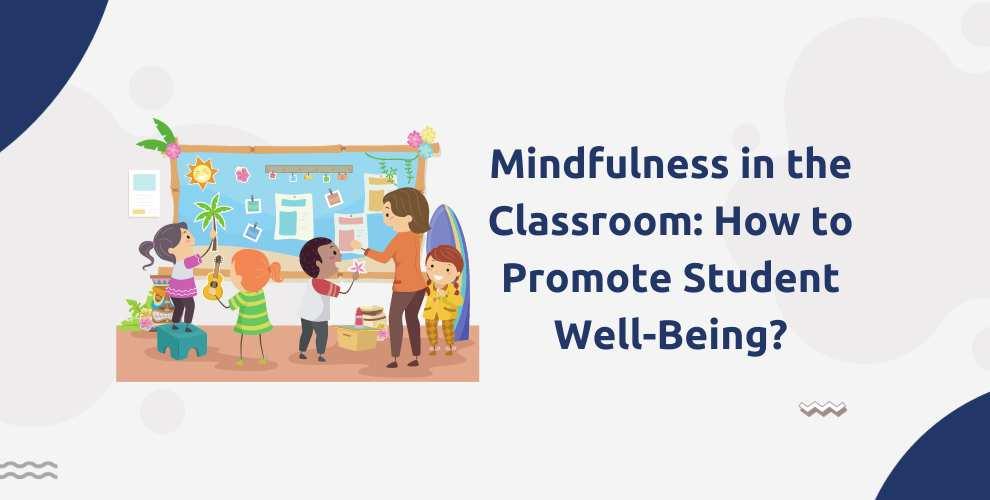Unlocking Student Potential: The Vital Role of Mindfulness in Education
In today’s fast-paced, high-pressure world, the well-being of students is more significant than ever. Academic challenges, social dynamics, and personal expectations frequently enough create overwhelming stress for learners across all ages. Educators and parents constantly seek innovative strategies to empower students for long-term success and happiness. Among the most effective and evidence-based approaches is mindfulness in education. By integrating mindfulness practices into classrooms, schools can nurture resilience, focus, and emotional intelligence—laying the foundation for unlocking every studentS potential.
What is Mindfulness in Education?
mindfulness refers to the practice of cultivating present-moment awareness with kindness and non-judgment. In educational settings, it involves teaching students and educators to pay focused attention to their thoughts, feelings, and surroundings, helping them respond more thoughtfully rather than react impulsively.
When introduced in schools through guided exercises,breathing techniques,or mindfulness-based activities,mindfulness in education empowers students to:
- Regulate emotions and cope with stress
- Enhance concentration and academic performance
- Build positive relationships and empathy
- Promote overall mental and physical well-being
The Benefits of Mindfulness for Students
The impact of mindfulness in the classroom is profound and supported by a growing body of research.Embedding mindfulness in education can lead to multifaceted improvements in academic and personal development.
1. Improved Academic Performance
- Enhanced Focus: Mindfulness training improves students’ attention span, allowing them to absorb and retain information more effectively.
- Better Working Memory: Studies show students practicing mindfulness exhibit improved working memory, crucial for learning and exam performance.
2. Reduced Stress and Anxiety
- Emotional Regulation: Mindfulness helps students recognize their emotions and apply calming techniques during stressful situations such as tests or presentations.
- Decreased Anxiety: Regular practice has been linked to lower anxiety and depression levels among youth.
3. Enhanced Social and emotional Skills
- Empathy and Compassion: Mindfulness fosters a greater sense of empathy, improving peer relationships and school climate.
- Conflict Resolution: Teaching mindful communication enables students to resolve disagreements peacefully.
4. Support for Diverse Learners
- Special Needs Support: Mindfulness has proven effective for students with ADHD,autism,or learning disabilities,aiding attention and emotional self-regulation.
- Promotes Inclusivity: A mindful classroom respects individual differences, making education more accessible to all learners.
Case Studies: Mindfulness Making a Difference
Schools across the globe are experiencing the transformative power of mindfulness in education. Here are a few inspiring examples:
San Francisco Unified School District
In a pilot program reaching over 2,000 students, mindfulness training led to a 50% reduction in suspensions, improved attendance rates, and measurable increases in academic achievement.
MindUP Program (Vancouver, Canada)
Implemented in more than 1,000 classrooms, MindUP reported that students showed increased optimism, improved math scores, and stronger social connections.
Anecdotal Success in rural Schools
A rural elementary school integrated mindfulness breaks into daily routines. Teachers observed fewer classroom disruptions, heightened engagement, and happier students eager to learn.
First-Hand Experiences: A Teacher’s Viewpoint
“After introducing simple mindfulness activities,my students became more focused and caring towards each other. They started reflecting before reacting, managed their anxieties better, and showed deeper curiosity about their subjects.” — Maria, 6th Grade Teacher
Teachers, counselors, and parents frequently enough remark on the profound shift in classroom atmosphere when mindfulness is practiced consistently. Over time, students not only perform better academically but also develop valuable life skills such as patience, resilience, and self-awareness.
Practical Tips: How to Integrate Mindfulness in Education
Embracing mindfulness for students doesn’t require a major overhaul of the school day. Here are practical strategies to incorporate mindfulness seamlessly into classrooms:
1. Start with Short Mindful Moments
- Begin lessons with 1-2 minute breathing exercises or body scans.
- Use mindfulness bells or gentle music to signal quiet reflection.
2. Include Mindful Movement
- Incorporate light stretching or yoga poses during class breaks.
- Encourage students to notice bodily sensations and practice grounding techniques.
3. Practice Mindful Listening
- Engage in listening circles where students share thoughts while others listen attentively, free of interruption.
4. Integrate Mindful Journaling
- Invite students to write down emotions, experiences, or gratitudes as part of their daily or weekly routine.
5. Leverage Mindfulness apps and Resources
- Explore age-appropriate mindfulness apps like Headspace for Kids, Calm Schools, or Smiling Mind.
- Attend teacher training programs or online workshops focused on mindful teaching strategies.
Best Practices for Educators
- Lead by Example: Educators who practice mindfulness themselves model calm, focused behavior for students.
- Consistency is Key: Integrate mindfulness practices into daily routines for best results.
- Create a Safe Space: Ensure mindfulness activities are inclusive and voluntary, respecting diverse backgrounds.
- Collaborate: Share ideas and resources with colleagues,and involve parents to reinforce mindfulness at home.
Potential challenges and Solutions
While enthusiasm for mindfulness in education is growing,some schools encounter barriers such as lack of time,resources,or buy-in from stakeholders. Here’s how to address common challenges:
- Time Constraints: Integrate brief, 1-3 minute practices so they fit into existing schedules.
- Training Gaps: Provide professional development and access to reputable online resources.
- Skepticism: Share evidence-based research and positive testimonials to build support.
- Cultural Sensitivity: Choose secular, non-religious mindfulness activities suitable for diverse student populations.
Conclusion: The Path to Unlocking every Student’s Potential
Mindfulness in education is much more than a trend—it’s a powerful tool for unlocking student potential and creating a more compassionate, effective educational habitat. By fostering self-awareness, emotional regulation, and focused attention, mindfulness equips students with lifelong skills that go beyond grades and test scores.
As research and real-world experiences demonstrate, even small, consistent steps can lead to transformational changes in students’ academic performance, well-being, and sense of belonging. For educators, parents, and policy makers looking to prepare children for a complex future, prioritizing mindfulness in the classroom is one of the most impactful, evidence-based decisions you can make.
Let’s embrace mindfulness in education—helping each student shine, thrive, and unlock their boundless potential.

